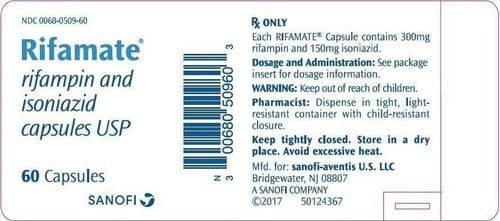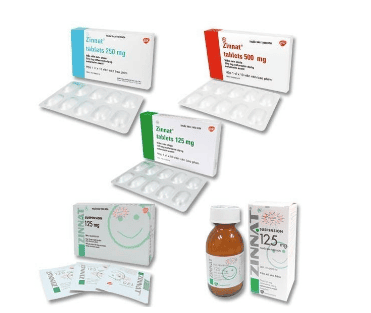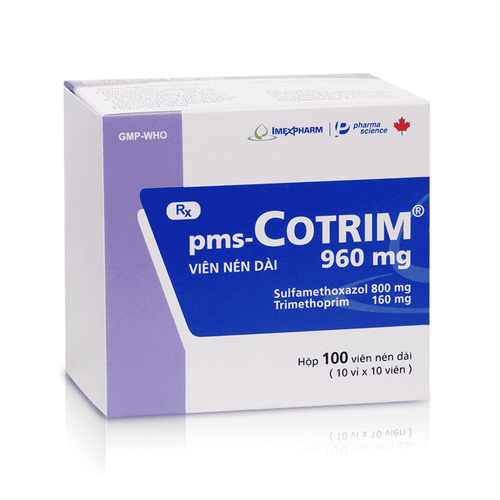This is an automatically translated article.
Yutazim Inj drug has the main ingredient is Ceftazidim with a content of 1 g, belongs to the 3rd generation Cephalosporin antibiotic group. Yutazim is used in the treatment of severe systemic infections, respiratory, urinary, ENT, and ENT infections. , skin and soft tissue... Learn about the ingredients, usage, dosage and side effects of Yutazim Inj that will give patients the best treatment effect.
1. What is Yutazim Inj?
Yutazim Inj drug is prepared in the form of a powder for injection, with the main ingredients including:
Active ingredient: Ceftazidim content of 1 g. Excipients: Sodium carbonate just enough for 1 vial of 1 g. Ceftazidim is a 3rd generation cephalosporin antibiotic, an antibiotic with bactericidal action based on the mechanism of binding to one or more proteins involved in the composition of bacterial cell membranes. Thus, blocking bacterial cell wall biosynthesis.
2. What does Yutazim Inj do?
Yutazim Inj is indicated for the treatment of the following cases:
Severe systemic infections such as sepsis, peritonitis, meningitis, infections caused by immunodeficiency seen in malignant tumors, lymphoma , acute leukemia , infectious burns. Ear, nose and throat infections such as sinusitis, severe otitis externa, otitis media, mastoiditis. Upper and lower respiratory tract infections such as bronchitis, infectious bronchiectasis, pneumonia, bronchitis, pleurisy, lung abscess. Gastrointestinal tract infections such as gastroenteritis, cholangitis, cholecystitis in gallstones, pyelonephritis, appendicitis, intra-abdominal abscess, colitis, pelvic inflammatory disease, post-infection produce. Urinary tract infections such as pyelonephritis, cystitis. Infections in bones and joints such as osteomyelitis, arthritis, infectious bursitis. Skin and soft tissue infections such as cellulitis, superinfected wounds, mastitis. Infections associated with hemodialysis or peritoneal dialysis. Prophylaxis of infection before surgery or procedure.
3. Contraindications of Yutazim Inj:
Hypersensitivity to any component of the drug Yutazim Inj. History of allergy to antibiotics containing Ceftazidime. History of allergy to other antibiotics of the Cephalosporin group. Severe impairment of renal function. Yutazim Inj when mixed with Lidocaine should not be used on: Intravenous infusion. Children under 30 months old. People with severe heart failure.
4. Dosage and how to use Yutazim Inj:
4.1. How to use: Yutazim Inj is used by intramuscular injection, injection or intravenous infusion:
Intramuscular: Mix one vial of Yutazim Inj with 3.0 ml of 0.5% or 1% Lidocaine solution and shake well. Intravenous injection: Mix one vial of Yutazim Inj with 10ml of distilled water for injection, or 0.9% NaCl solution, or 5% Dextrose intravenously slowly over 2-4 minutes. Intravenous infusion: Mix 1 vial of Yutazim Inj with 50-100 ml with distilled water for injection, 0.9% NaCl solution, 5% Dextrose to achieve a concentration of 10-20 mg/ml. Note:
Do not mix medicine with Yutazim Inj Ringer lactate solution or solutions containing Calcium. Yutazim Inj can be used in combination with other antibiotics, depending on the condition and indications of the doctor. 4.2. Dosage: Adults
Usual dose: Infusion 1 vial (1 g)/time x 3 times/day or 2 vials (2 g)/time x 2 times/day. Dose for urinary infections or mild infections: Infusion 1⁄2 - 1 vial (0.5 - 1g) / time x 2 times / day. Dose for severe infections: Infusion 2 vials (2 g)/time x 3 times/day or 3 vials (3 g)/time x 2 times/day. Dose for severe pneumonia: Infusion 100-150 mg/kg/day x 3 times/day. The maximum dose a day is 9 g. Elderly: Maximum daily dose of 3 g. Dose to prevent infection: Infusion 1 ampoule (1 g)/time 30 minutes to 2 hours before surgery. Children > 2 months old
Usual dose: Infusion 30-100 mg/kg/day x 2-3 times/day. Immunocompromised or meningitis: 150 mg/kg/day infusion. The maximum dose a day is 6 g. Patients with impaired renal function
Use dose based on Creatinine clearance (CrCl)
CrCl dose 31 - 50 ml/min: Infuse 1 vial (1 g)/time x 2 times/day. Dose of CrCl 16 - 30 ml/min: Infusion 1 vial (1 g)/time x 1 time/day. CrCl dose 6 - 15 ml/min: Infusion 1⁄2 vials (0.5 g)/time x 1 time/day. CrCl dose < 5 ml/min: Infusion 1⁄2 vials (0.5 g)/time x 1 time/2 days. Patients on hemodialysis
Initial dose: Infusion 1 vial (1 g)/day. Next dose: Infusion 1⁄2 vials (0.5 g)/day.
5. Notes when using Yutazim Inj
5.1 Side effects encountered when using Yutazim Inj Treatment with Yutazim Inj in high doses or for a long time, can cause side effects such as:
Common: Irritation at injection site, proximal thrombophlebitis injection site. Skin symptoms such as itching, rash, maculopapular rash. Uncommon: Systemic symptoms such as fever, headache, dizziness, Quincke's edema, severe possibly anaphylactic shock. Blood abnormalities such as anemia, leukopenia, neutropenia, eosinophilia, thrombocytopenia, positive Coombs reaction, coagulation disorders. Nervous disorders such as dysgeusia, dysesthesia, convulsions, tremors, neuromuscular excitability. Gastrointestinal disturbances such as nausea, vomiting, abdominal pain, diarrhea or constipation. Rare: Agranulocytosis, hemolytic anemia. Gastrointestinal symptoms such as pseudo-plaque colitis. Skin symptoms such as erythema multiforme, Stevens-Johnson syndrome, toxic skin necrosis. Pseudomembranous colitis, increased liver enzymes, increased alkaline phosphatase. Decreased glomerular filtration rate, increased blood urea and creatinine. Patients, family members and medical staff should pay close attention and follow up after using Yutazim Inj for patients to promptly detect and handle the above side effects or any other abnormalities.
5.2 Notes on the use of Yutazim Inj in subjects Be careful when using Yutazim Inj in people with severe liver and kidney dysfunction, people with a history of gastrointestinal disease, people who are using Vitamin K. The dose should be reduced. when using the drug Yutazim Inj on these subjects. Pregnant women: According to the US Food and Drug Administration (FDA) classification of active ingredients Ceftazidim in group B, group with no or little evidence of risk on pregnancy. Therefore, the use of Yutazim Inj should be considered during pregnancy unless absolutely necessary. Lactation: There are currently some studies indicating that the active ingredient Ceftazidim contained in Yutazim Inj can be excreted in breast milk at low concentrations. Therefore, caution should be exercised when using Yutazim Inj in this subject. Drivers or machine operators may experience dizziness and lightheadedness after using Yutazim Inj.
6.Drug Interactions Yutazim Inj
Interactions with other drugs
Yutazim Inj should not be mixed with other antibiotics. Drugs that increase nephrotoxicity when co-administered with Yutazim Inj: Aminoglycosides. Strong diuretics such as furosemide. Chloramphenicol is antagonistic to the drug Yutazim Inj. Above is an overview of the ingredients, uses, dosage and precautions when using Yutazim Inj. To achieve a high therapeutic effect when using Yutazim Inj drug requires the coordination of both patients, family members and medical staff.
Please dial HOTLINE for more information or register for an appointment HERE. Download MyVinmec app to make appointments faster and to manage your bookings easily.













